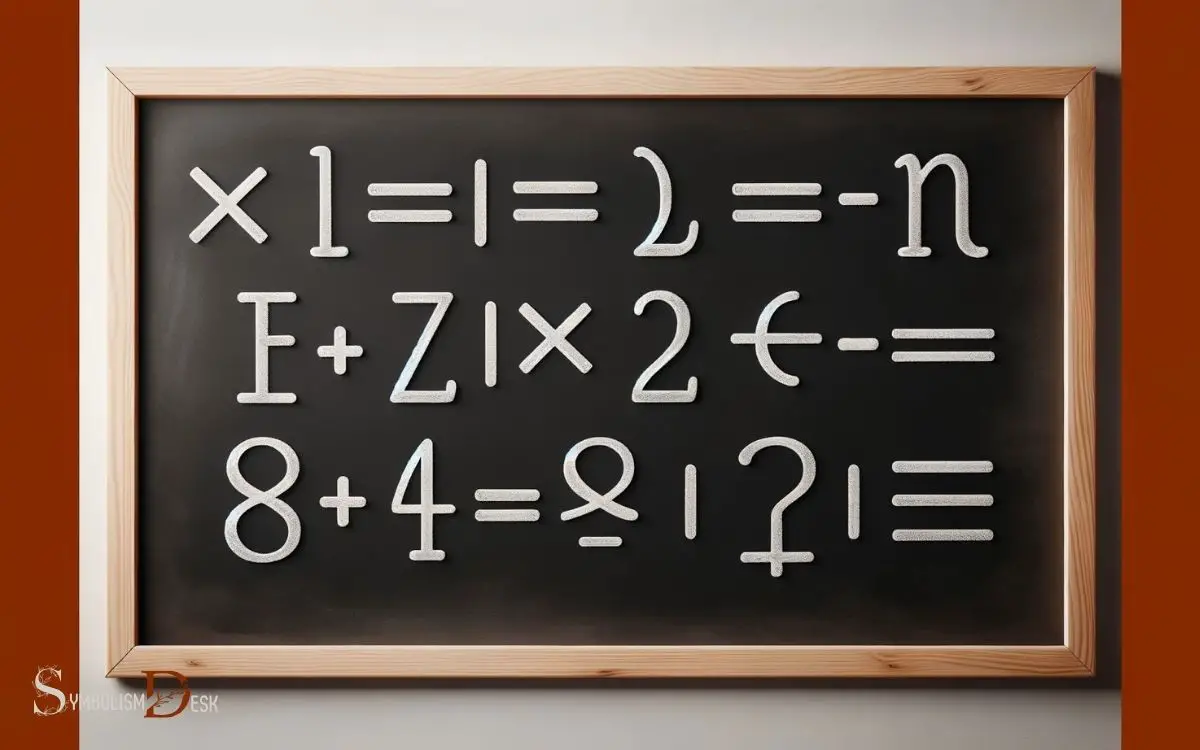Symbols for Inequalities in Math: Greater Than!
In mathematics, inequality symbols are critical tools used to represent the relationship between different quantities.
These symbols include less than (<), greater than (>), less than or equal to (≤), greater than or equal to (≥), and not equal to (≠). Mastery of these symbols is essential for solving and understanding a range of mathematical problems.
Inequality symbols are used across various branches of mathematics:
For example, if a > b, it means that “a” is greater than “b”. Inequality symbols form the foundation of solving equations and understanding mathematical relationships.

Key Takeaway
Understanding Inequality Symbols in Mathematics
| Symbol | Meaning | Example |
|---|---|---|
| < | Less than | 3 < 5 |
| > | Greater than | 7 > 4 |
| ≤ | Less than or equal to | x ≤ 10 |
| ≥ | Greater than or equal to | y ≥ 2 |
| ≠ | Not equal to | z ≠ 0 |
Basic Inequality Symbols
When expressing inequalities in math, the basic symbols used are ‘<’ for less than and ‘>’ for greater than. These symbols are essential for comparing numerical values and expressing relationships between them.
For instance, if x < 5, it means that x is less than 5, and if y > 10, it indicates that y is greater than 10. Understanding and utilizing these symbols are fundamental in solving equations and representing mathematical relationships.
Moreover, these symbols are the building blocks for more complex mathematical expressions involving multiple inequalities, known as compound inequalities.
Compound Inequality Symbols
Compound inequality symbols are commonly used in mathematical expressions to represent intersecting or non-intersecting ranges of values. They are used to express that a variable is within two different ranges simultaneously.
The symbol “and” (∩) is used when the ranges intersect, indicating that the variable falls within both specified ranges.
For example, “2 < x < 5” can be expressed as “2 < x and x < 5”. On the other hand, the symbol “or” (U) is used when the ranges do not intersect, indicating that the variable falls within one range or the other.
For instance, “x < 3 or x > 7” represents a range of values that are less than 3 or greater than 7. Understanding and utilizing these compound inequality symbols is essential for effectively communicating and solving mathematical problems involving multiple ranges of values.
Inequality Symbols in Equations
In mathematical equations, the use of inequality symbols is crucial for indicating the relationship between two quantities, allowing for the comparison of their magnitudes.
The most common inequality symbols used in equations are “<” (less than), “>” (greater than), “≤” (less than or equal to), and “≥” (greater than or equal to). These symbols allow us to represent relationships where quantities are not necessarily equal but have a comparative value. In some mathematical contexts, understanding these inequalities can be essential for solving problems involving ranges or boundaries. Additionally, the concept of the “symbol for opposite in math,” often denoted by a negative sign (-), can be used in conjunction with inequalities to represent values on different sides of zero.
These symbols are employed to express the relationship between two quantities, with the inequality sign pointing towards the smaller quantity.
For instance, in the equation 2x + 5 > 15, the inequality symbol “>” indicates that the expression 2x + 5 is greater than 15.
Understanding and correctly interpreting these inequality symbols is essential for solving equations and representing real-world relationships in mathematics.
Graphing Inequality Symbols
Graphing inequality symbols involves representing the relationship between two quantities on a coordinate plane using various mathematical symbols.
When graphing inequality symbols, it’s important to consider the direction of the inequality and whether the boundary line is included or not.
This visual representation helps in understanding and analyzing the possible solutions to an inequality.
Some key points to consider are:
- The shaded region indicates the solution set.
- Dashed lines represent strict inequalities, while solid lines represent inclusive inequalities.
- The region above the line represents greater than inequalities, and below represents less than inequalities.
- Points on the line satisfy the inequality.
- Graphing inequalities allows for a quick visual understanding of the solution space.
Understanding these visual representations is crucial for solving problems involving multiple inequalities simultaneously.
Applications of Inequality Symbols
Applications for the use of inequality symbols extend beyond graphing and provide valuable tools for analyzing relationships between quantities in mathematical contexts.
Inequality symbols are widely used in various mathematical applications, such as representing constraints in optimization problems, expressing limits in calculus, and defining ranges in statistics.
Below is a table summarizing the common applications of inequality symbols in mathematics:
| Application | Example | Inequality Symbol |
|---|---|---|
| Optimization | Maximize profit given constraints | >=, <= |
| Calculus | Limit of a function | >, < |
| Statistics | Defining a range | !=, >, <, >=, <= |
Understanding and applying inequality symbols in these contexts is crucial for solving mathematical problems and analyzing real-world situations.
Whether it’s maximizing profits, determining limits, or defining ranges, the use of inequality symbols provides a powerful framework for mathematical analysis.
Conclusion
The symbols for inequalities in math are essential for representing relationships between numbers and variables.
From basic inequality symbols to compound inequality symbols, and their use in equations and graphing, these symbols play a crucial role in mathematical expressions and problem-solving.
Understanding and applying these symbols is fundamental in various mathematical applications, making them indispensable tools for mathematicians and students alike. Without them, the language of mathematics would be incomplete and ineffective.






